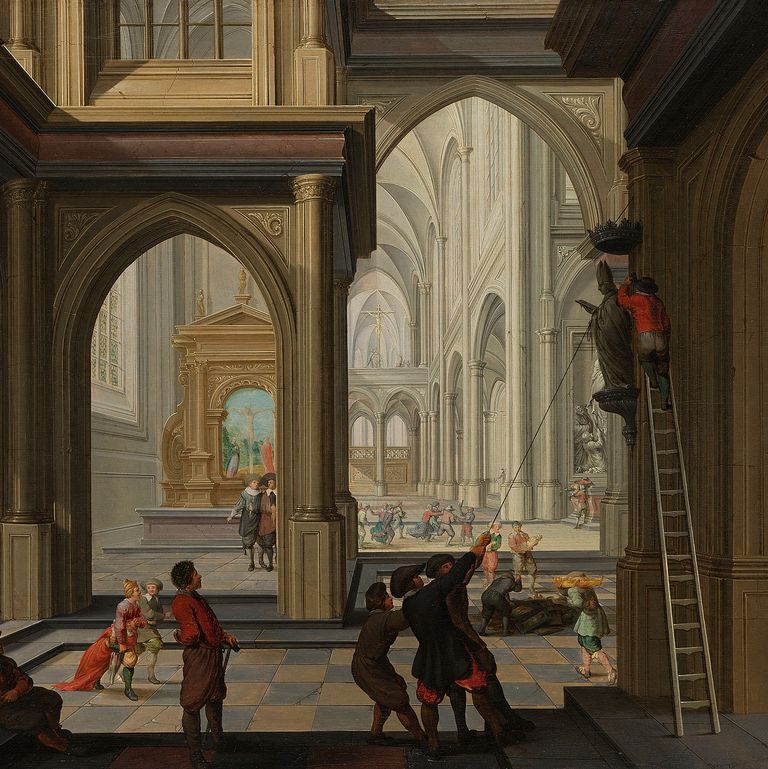Iconoclasm Now: Charlie Hebdo and the Lethal Power of Art
All look on in revulsion as terrorists yelling We have avenged the Prophet Muhammad! Allahu akbar! kill people for making and publishing drawings of the prophet Muhammad. Again, not to over-simply ideological fanaticism, and not even raising how smug, snotty, and obnoxious the cartoons actually are (were they racist or anti-Semitic and regularly published in America, all sorts of hell would be raised; guns, of course, eliminate all nuance), this non-random planned act was carried out because of a drawing. Killing for images is as primitively rooted and as complex as killing those who believe in one real or fictional God and not another. All four great monotheistic religions  Judaism, Christianity, Mohammedanism, and Zoroastrianism  are based on the Old Testament. About the making of images, the Second Commandment states, Thou shalt not make unto thee any graven image  for I the Lord thy God am a jealous God. This is saying two things. First, that God permits abstraction and unhewn stone (Neolithic circles and the like) but proscribes that there be no realistic images. Cursed be the man that maketh any graven or molten image. Second, this God knows that there are other Gods out there  be it in Greece, Rome, Egypt, around the Tigress and Euphrates, over the steppes, in Northern Africa, sub-Saharan Africa, around the Mediterranean, the subcontinent of India, and the Far East. The Koran contains this imperious prohibition against images, as well.
Several parts of the Bible reinforce this injunction against realism. Deuteronomy states ÔÇ£the work of the hands of the craftsman is an abomination unto the Lord.ÔÇØ In a hadith, the Prophet Muhammad┬ásays, ÔÇ£The angels will not enter a home where there is an image.ÔÇØ A companion of the Prophet,┬áAbd-Allaah ibn MasÔÇÖood, says, ÔÇ£I heard the Prophet (peace and blessings of Allaah be upon him) say: ÔÇÿThe people who will be most severely punished on the Day of Resurrection will be the image-makers.ÔÇÖÔÇØ Interestingly, ninth-century Islamic commentator Al-Azraqi says that on returning to Mecca, the Prophet found the Kaaba covered with paintings. He had all the paintings destroyed except for one depicting Mary and Jesus.
Over the millennia, the Second Commandment has led to incredible carnage. The Bible says, Ye shall destroy their altars, break their images   Iconoclasts, or image breakers, killed people and destroyed countless works of art and architecture. Iconoclasts believe that images are not abstract representations of things but they are the thing itself and, as made not by God, they contain demonic spirits. The horrific paradox then is that these killers believe in the power and divinity of images, art, and architecture more than those who make the objects and who see what they make as abstract representations of ideas and things. A double paradox arises in so far as when the iconoclast kills because of an image he/she is eliminating and negating the judgment and vengeance of God, taking matters into his/her hands. Another layer of paradox forms in the minds of nonbelievers like me who believe that the gods that iconoclasts are killing for are, in actuality, superb works of fiction, written so beautifully and compellingly that their protagonist is worshiped as a god.
The destruction of objects has taken many forms ÔÇö including razing entire libraries, temples, churches, and mosques ÔÇö but often includes scratching out eyes or drawing a line across the figureÔÇÖs neck to behead it. Sculptures have the face or head smashed and the eyes gouged out. The faces of paintings are often removed and burned. Far more art has been destroyed in the name of these four religions than has survived. Looked at through this prohibitive lens, itÔÇÖs a wonder that any religious art survives at all.
The killers in Paris believed that the drawing was not a drawing but an incarnation of God, an invisible essence made flesh, an object wherein there was no distance between image and God. Whatever they believed, they took this belief to psychopathic levels.
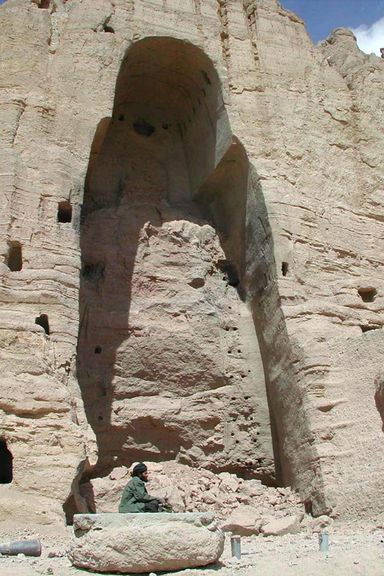
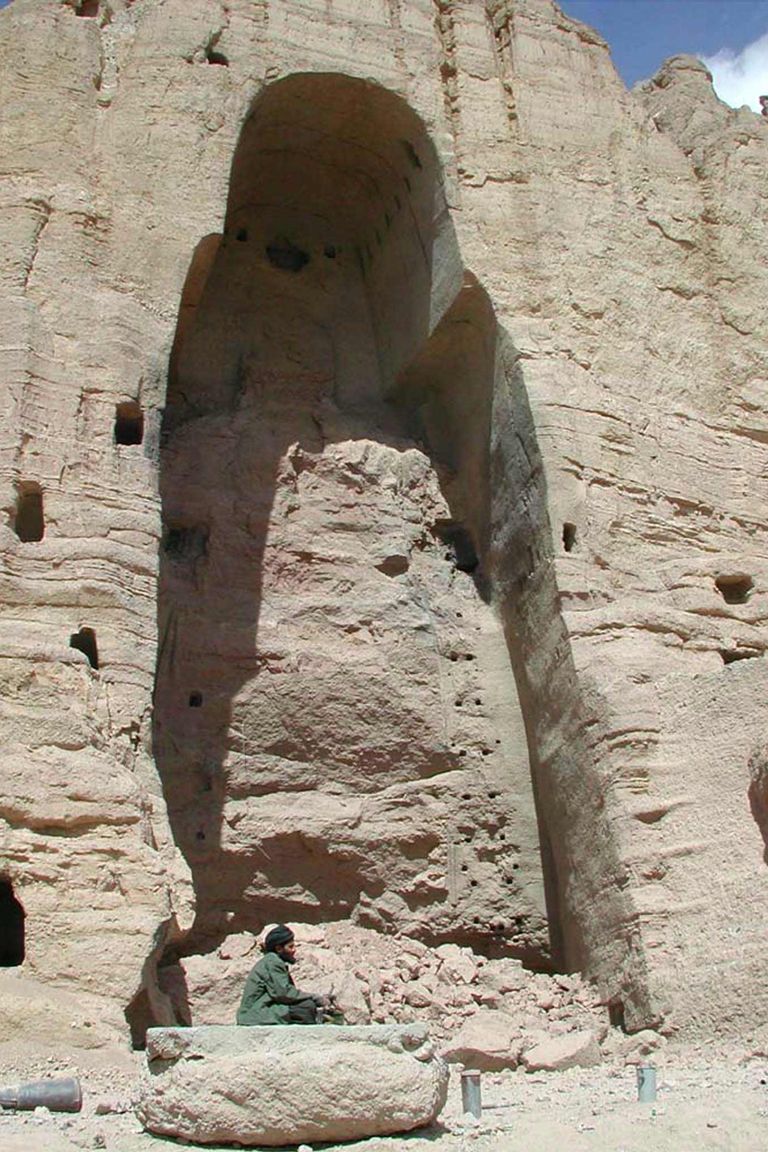
The Taliban blasted and utterly destroyed these cliff monuments in March 2001.
Photo: ┬® Corbis. All Rights Reserved.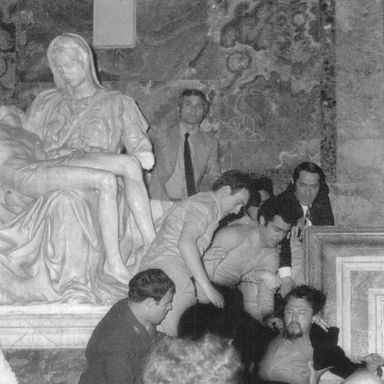
In May 1972, Laszlo Toth defaced the statute with a hammer, shouting, ÔÇ£I am Jesus Christ, Christ is risen from the dead.ÔÇØ
Photo: The Vatica...In May 1972, Laszlo Toth defaced the statute with a hammer, shouting, ÔÇ£I am Jesus Christ, Christ is risen from the dead.ÔÇØ
Photo: The Vatican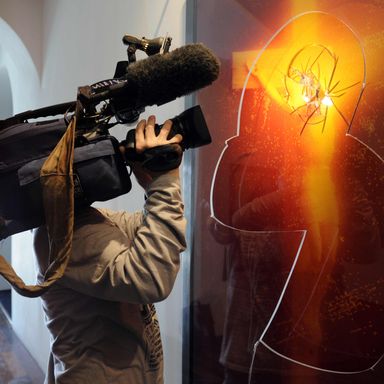
The artist had long received death threats and hate mail for this work, but in 1997, two teenagers attacked the piece with a hammer while it was on di...
The artist had long received death threats and hate mail for this work, but in 1997, two teenagers attacked the piece with a hammer while it was on display at the National Gallery of Victoria in Melbourne.
Photo: Boris Horvat/AFP/Getty Images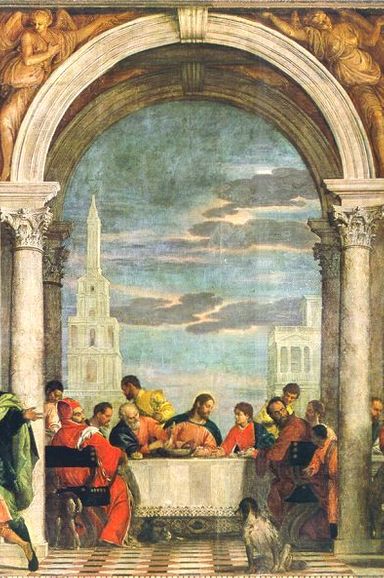
Veronese's the Last Supper contained, in the words of the Inquisition, "buffoons, drunken Germans, dwarfs and other such scurrilities."...
Veronese's the Last Supper contained, in the words of the Inquisition, "buffoons, drunken Germans, dwarfs and other such scurrilities." Told that he must change the painting, Veronese instead renamed the piece to The Feast in the House of Levi and saved the painting.
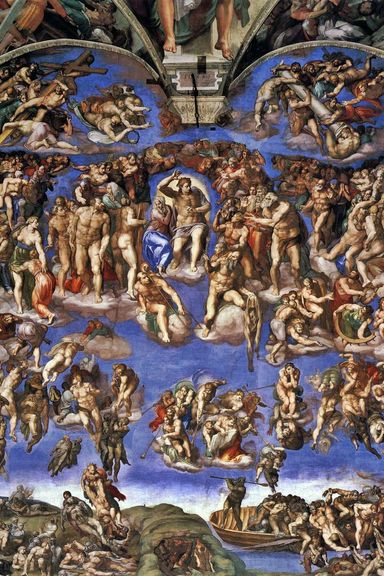
Michaelangelo's Last Judgement in the Sistine Chapel was attacked in the Counter-Reformation for nudity. The figures were ordered to be pain...
Michaelangelo's Last Judgement in the Sistine Chapel was attacked in the Counter-Reformation for nudity. The figures were ordered to be painted over with loin cloths. They remained this way for several centuries.
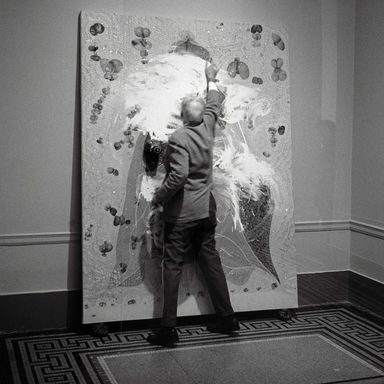
In December 1999, retired schoolteacher Dennis Heiner smeared white paint over Chris OfiliÔÇÖs Holy Virgin Mary, accusing the work of "Catholic-bas...
In December 1999, retired schoolteacher Dennis Heiner smeared white paint over Chris OfiliÔÇÖs Holy Virgin Mary, accusing the work of "Catholic-bashing."
Photo: Philip Jones Griffiths/Magnum Photos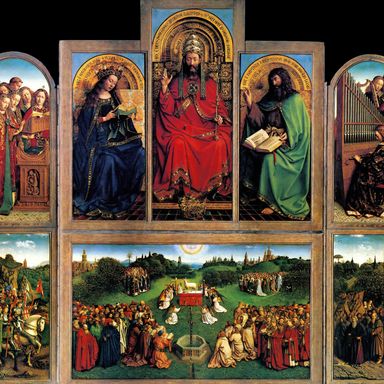
In 1942, Hitler ordered van Eyck's Ghent Altarpiece to be seized and brought to Germany to the Schloss Neuschwanstein castle in Bavaria. After Al...
In 1942, Hitler ordered van Eyck's Ghent Altarpiece to be seized and brought to Germany to the Schloss Neuschwanstein castle in Bavaria. After Allied air raids made the castle too dangerous for the painting, it was stored in the Altaussee salt mines. And saved.
Photo: Universal History Archive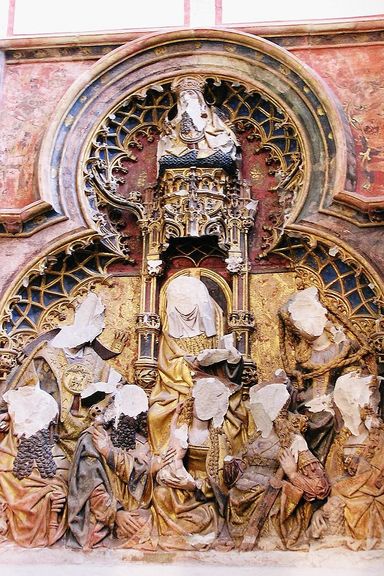
The piece represents the Calvinist destruction of religious images in 16th-century Europe.










